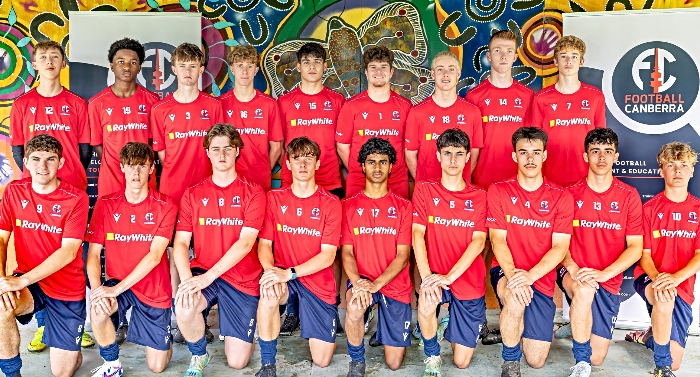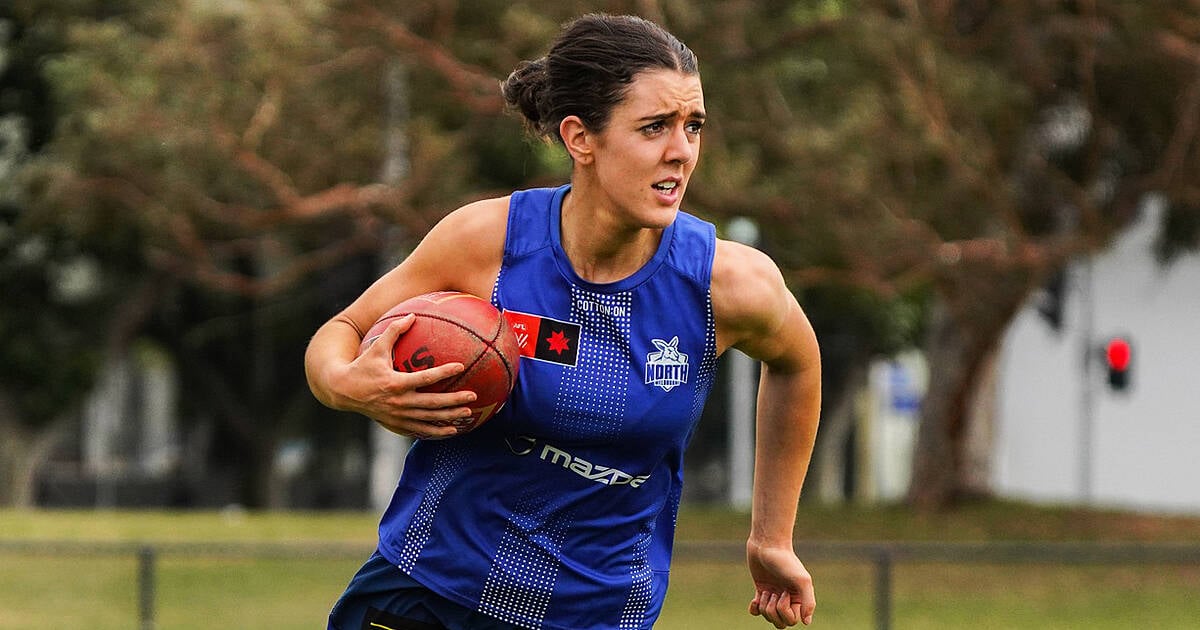Hall of Fame Bio: Paul Roos

- by Admin
- August 8, 2024

Paul Roos
1995-1998
87 games
19 goals
All-Australian 1996, 1997
Coach 2002-2010
Premiership Coach 2005
AFL Hall of Fame
BIO
The Fitzroy Football Club is one of the game’s great clubs. Like South Melbourne, though, they’d fallen on hard times, and by the time local product Paul Roos won his fifth best and fairest in 1994, they had no money to mint the medal.
It was the latest worrisome sign for Roos, and when the Swans came calling, they piqued the interest of the game’s pre-eminent centre half-back. A club contingent including Ron Joseph, Ron Barassi and Richard Colless met Roos at the Hyatt in Melbourne, impressing in their professionalism and forecasting.
“They’d started to put the right people in place, and a big part of going up there was being coached by ‘Barass’. Ronny Joseph was fantastic too, and to get Tony Lockett’s signature on the back of Barassi’s was massive,” Roos recalled.
A sense of purpose doesn’t come from thinking about it. It comes from taking action that moves you toward the future. The club was emerging from the gloom of three consecutive wooden spoons, and in 1995, Roos’ first season at the club, the Swans improved markedly, narrowly missing the finals.
“There was a lot of young talent coming into the footy club, along with some experienced heads, and you can’t underestimate the impact that Kevin Dyson, Craig O’Brien and Stuey Maxfield had as high-quality AFL players coming in, that trained really hard and helped set the standards,” Roos said.
Despite the inclusion of key recruits, nobody expected Sydney, with an untried coach in Rodney Eade, to scale any heights in 1996. However, winning regularly, momentum quickly gathered.
The players, for the first time in years, gained notoriety in the city, and by the time the Swans played Geelong in Round 14, 44,000 piled into the SCG, with thousands of locked-out fans ushered into the SFS next door to watch on the big screen.
Riding that wave to a finals series, Sydney won its way into a home preliminary final against Essendon. The match ended with Tony Lockett kicking the match-winning score after the siren, sending the Swans into their first Grand Final in 51 years.
“We were a team that just kept fighting, and it felt like it was meant to be. We had a crowd that was over-hyped and just absolutely pumped, and we had a player who was arguably the best player ever to play the game, kicking the winning point. It was just extraordinary.”
The Swans may have lost the AFL’s Centenary Grand Final to North Melbourne, but they’d put Australian football on the map in NSW, with Roos a significant contributor. They consolidated, playing finals in the following two seasons, though ’96 would be Roos’ only chance to win that elusive flag—as a player.
He retired in 1998, and teammate Paul Kelly described Roos as “The ultimate centre half-back: a beautiful mark, a long kick, a great reader of the play and committed to succeed.”
While holidaying in the United States in 1988, Roos met his wife, Tami. She then came to Australia, and four years later, they were married in San Jose. When he finished playing, they relocated to the US with their boys, Dylan and Tyler, to spend more time with Tami’s family.
They spent a year overseas. Although unsure about the future, Roos visited the Chicago Bulls, Chicago Bears, Denver Broncos and San Diego Chargers to see how they operated. He learned a lot and, on his return, joined Rodney Eade’s coaching staff.
During the final years of his playing career, Roos drafted a list that would eventually guide his coaching philosophies. If he ever coached, he wanted to recall what it felt like as a player and view the game through a dual lens.
Roos’ list contained 25 key points, including the following observations: the coach’s attitude will rub off on players, never lose sight of the fact it is a game of football, positive reinforcement for players, never drag a player for making a mistake, enjoy training, make players accountable for training, discipline, team plans – it is their team too, be prepared to listen to advice from advisers.
By 2002, the Swans were a fractured club. And, when Eade moved on, Roos was offered the chance to coach the team—temporarily. “‘I had to decide whether I wanted to do it. I knew that I was potentially putting my coaching career on the line within a 10-week period, and that was a big decision.”
After those 10 weeks, results and public sentiment demanded Roos continue. He was eventually chosen to coach the Sydney Swans—an appointment that chairman Richard Colless later described as one of the most pivotal in Sydney’s history. Roos remained in charge until 2010.
He galvanised the group, and the younger players, in particular, embraced his methods. Swans Hall of Famer Jude Bolton said, “Roosy’s whole philosophy brought a completely different change from our perspective. And it all started to align with the way a lot of us thought about footy. Sure enough, you could see that change in mindset among the boys.”
At a Coffs Harbour pre-season camp in 2003, Roos invited leadership consultant Ray McLean to assist in developing a leadership structure with the players. They coined a trademark; they craved respect and based their game on three key pillars—hard, disciplined, and relentless.
Later, these values came to underpin ‘The Bloods Culture’, and the Swans became renowned for their accountability and resilience. Roos embraced vulnerability and encouraged an open, honest dialogue within the playing and coaching group.
His approach reaped the rewards. They reached a preliminary final in his first year and a semi-final the next. In 2005, Roos felt they were ready to challenge. “There was a pivotal moment early in the year after we got smashed by West Coast. The players had stopped choosing to play for each other.”
“Then, they made the choice to play for their teammates. They made the choice to be great, to do the things they know worked for us, and once they made that choice, the rest is history.”
The Swans surged into September, winning 10 of their last 12 matches. After three nail-biting finals, Sydney faced West Coast in the Grand Final. Bloods champion Michael O’Loughlin recalls the quiet confidence Roos instilled in the players.
“Roosy was a master coach and a master communicator with the players. His calmness and the calmness that the assistant coaches displayed certainly helped us. It was clear to us that the preparation was spot on, and we knew we had done the work. We knew we deserved to be there, and everyone was ready to go,” O’Loughlin said.
The Bloods prevailed by four points, and that day is now footy folklore. When Roos took to the microphone, his powerful words seeped into the club’s soul. With red and white confetti falling around him, he boomed, “To the people who’ve waited 72 years to see South Melbourne/Sydney Swans win the premiership…Here it is!”
For a man who spent 34 years at the game’s highest level, it’s a cherished achievement. “The biggest thing that hits you is what an incredible moment it was for so many thousands of people, even to this day when I run into Swans fans.”
“When you hear their stories, it strikes you how much it meant to so many people, even to this day. And as time goes on, you realise it even more because people still refer to it years later, and it is incredibly humbling to be part of that experience and to understand the impact it had on so many people,” Roos said.
And Roos’ impact extends much further than that famous day. The following year, the Swans fell one point short of another flag and played finals in all but one of his eight full seasons at the helm. He created a culture that is now synonymous with Sydney. Paul Roos is, without question, one of the most influential figures in Swans history.
The Latest News
-
December 27, 2024Australian media is calling for Virat Kohli to be ‘hanged’ amid Sam Konstas controversy, says Sunil Gavaskar | Sporting News India
-
December 27, 2024The year in big business news, according to Taylor Swift
-
December 27, 2024Foxtel’s sale could change the game for two sports in Australia
-
December 27, 2024Tennis: Injury forces Simona Halep to withdraw from Australian Open 2025
-
December 27, 2024The secret post-sandpaper-gate change that saved Virat Kohli from suspension





